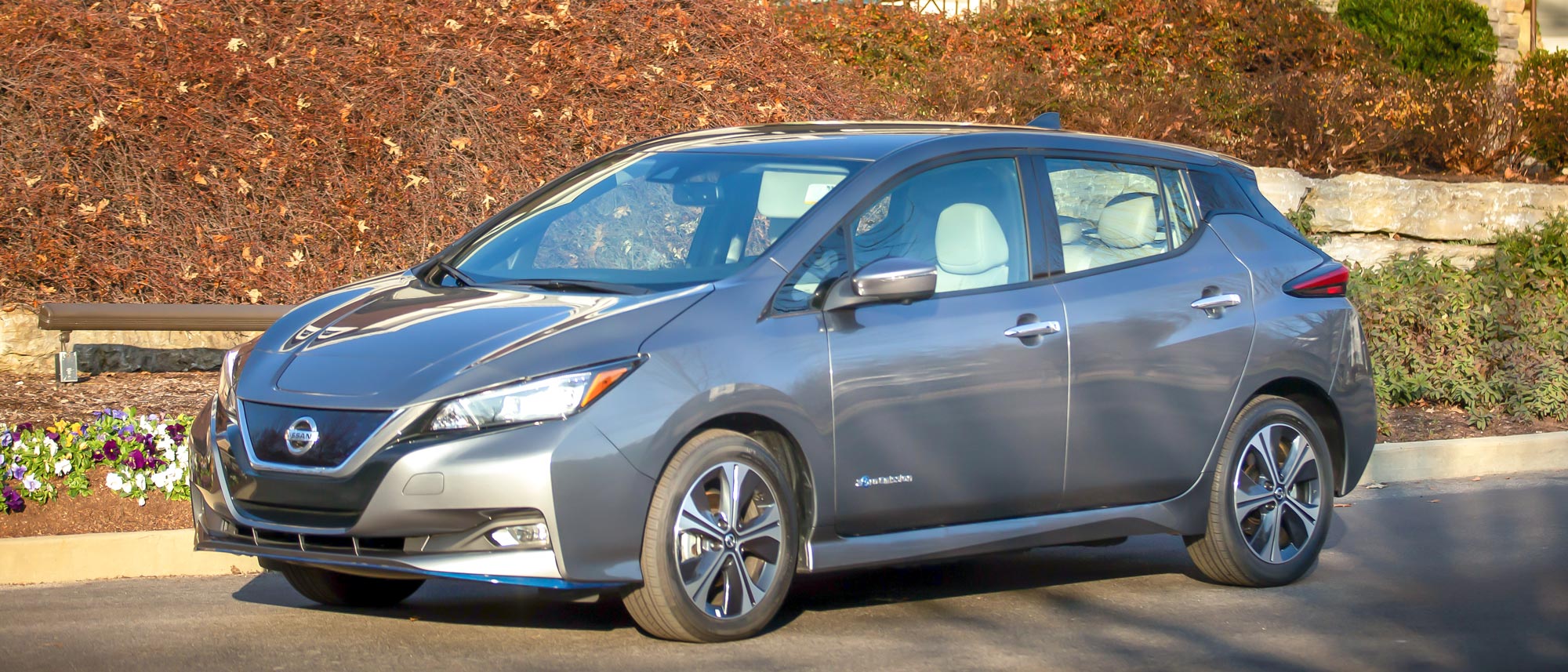Tom's Guide Verdict
The Nissan Leaf is not the sleekest car but Nissan has pulled off what no other EV manufacturer has done to date: an EV that can be acquired for just over $20,000. This is a great first EV for new buyers.
Pros
- +
Low price
- +
Competitive range
- +
Smart driving features standard
Cons
- -
Slower charging standard
- -
Noticeable road and wind noise
- -
Boring design
Why you can trust Tom's Guide
Release date: Out now
Price: Starting at $27,800 (MSRP); as tested $37,400
Power: Single motor front-wheel drive
Horsepower: 147hp
Battery range: 149 to 226
Top speed: 90 mph
Smarts: ProPilot Assist. Wireless Apple CarPlay and Android Auto
The Nissan Leaf doesn't have the looks of the style of bigger names, but it's still proven itself to be an incredibly popular electric car. Popularity that's likely to continue, considering it's one of the few cars still eligible for the federal tax credit following a number of key changes to eligibility.
It's what happened when you offer an EV with a low price tag, plenty of tech options, and solid performance. Not only is the Leaf one of the cheapest electric cars on the market, second only to the newly-discounted Chevy Bolt, it has almost 150 miles of driving range in that particular configuration.
We spent a little over two weeks inside the Leaf, on loan from Nissan. We were impressed by how easy it was to start up and go. For those looking to buy their first EV, the Nissan Leaf is a great feature-rich entry point. With a maximum range of 226 miles, it’s great for grocery runs or traveling around town, though the lower 149-mile range option might not be enough for some.
Nissan has been quick to promote the fact the Leaf can be bought for just over $20,000, after the tax credits are taken into consideration. Some might argue that it’s not really a true $20K vehicle as it requires the buyer to redeem a potential tax credit worth up to $7,500, but it's still very cheap by electric car standards
Even if the car is set to be replaced by 2025, with an all-electric Micra and a crossover SUV, that doesn’t change the fact that the Leaf is currently one of the cheapest electric cars on sale in the United States. It's also the only Nissan EV on sale in North America, thanks to numerous delays to Nissan Ariya production.
But pricing discussions aside, the Nissan Leaf is not a perfect EV. The lane assist and infotainment system, while good compared to other car manufacturers, lags far behind what the likes of Tesla is throwing under the hood.
The interior quality is about on par with the segment, although some plastics can feel a little hollow to the touch. And the exterior design still looks like a squat gerbil. Even then, for the average driver looking for a daily commuter, it’s hard to go wrong with the Nissan Leaf.
Nissan Leaf review: Release date, pricing and trim levels
The Nissan Leaf is available now and comes in five different models. The lower end Leaf S has a paltry 40 kWh battery with an estimated range of 149 miles. This model starts at $27,800, and it’s this unit, which after taking the full $7,500 tax credit into account, that can hit a sub-$20K price point.
The top end of the Leaf range is the Leaf SL Plus. This doesn’t have the highest range in the lineup, with 215 miles in the tank, but its $37,400 price tag does include Bose speakers and partial leather seats.

Potential buyers will likely want to opt for either the S Plus, which includes the 62 kWh battery and 226 miles of range for $32,400, or the SV Plus. That has a slightly lower range of 215 miles, but the increased $35,400 price tag includes 17” aluminum-alloy wheels, an all-around camera system, LED headlights, ProPilot assist and the optional Door to Door Navigation with Premium Traffic. Unfortunately we were not able to test this last feature.
It should be noted, Nissan’s ProPilot Assist, Nissan’s driver assistance system, is only available on the SV, SV Plus and SL Plus models.
Nissan Leaf review: Range, battery and charging
The Nissan Leaf has middling range. While the 215 mile range Nissan claims sounds like a lot, your real world driving range will all depend on how you drive. I was faced with a bout of hot weather that forced me to crank on the air conditioning, and lowered how much range I could squeeze out of the battery. Wind resistance or other environmental factors can also play a part.
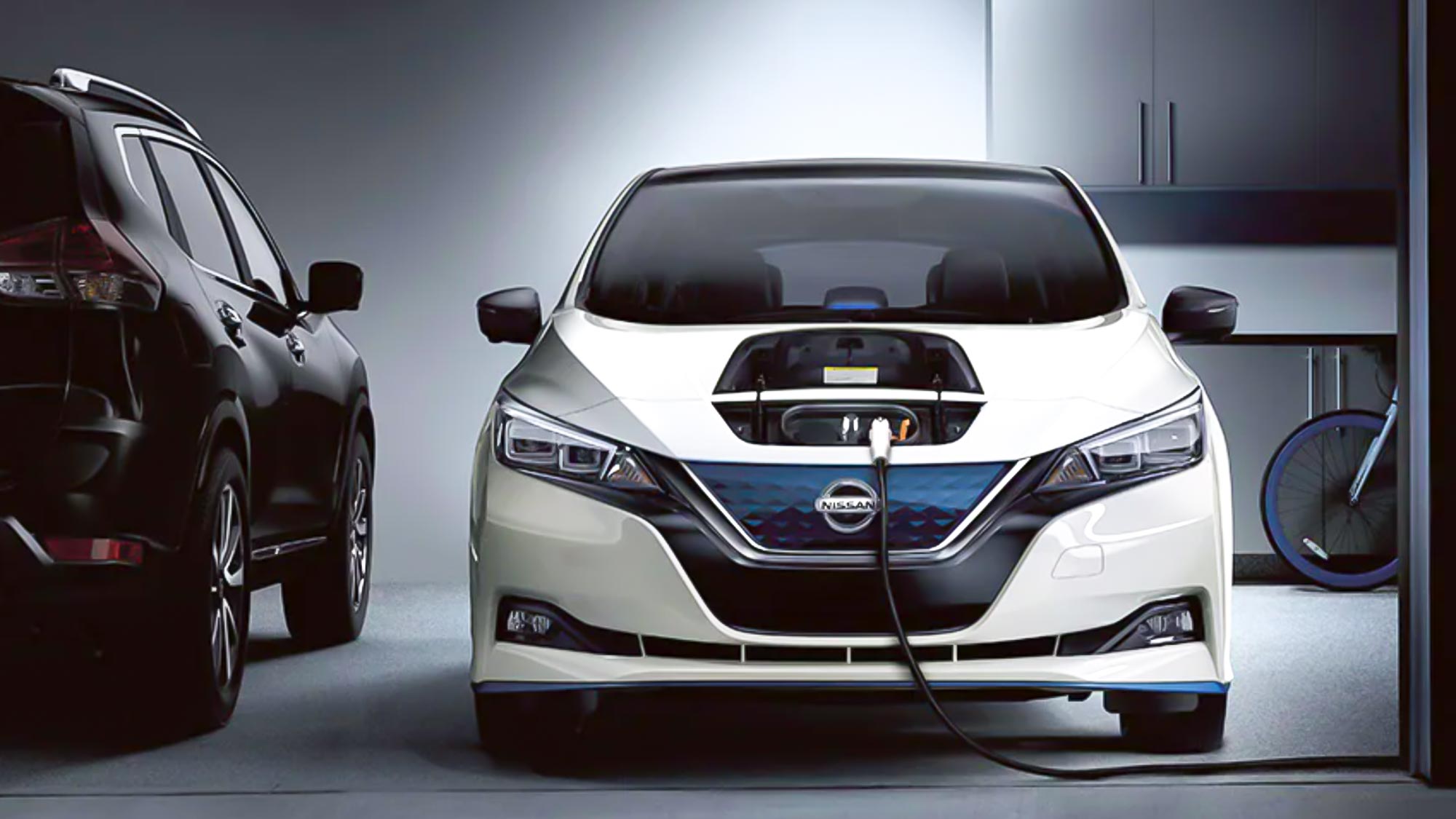
Plus, Houston, being a widespread city connected by ever-widening toll roads, makes even a trip to the grocery store a multi-mile romp. Really, the Leaf is less ideal in widespread cities. It’s not impossible to use, but daily commuters should make sure to recharge it overnight.
In our review of the Volkswagen ID.4, tested in the Bay Area of California, we found that daily use exceeded VW’s range estimates in some instances. That was not the case with the Leaf.
Often, at least in the humid Texas heat, range seemed to slip more quickly than what Nissan estimated. Granted, because Houston has miles of highways, speed limits here are higher, and even then, drivers often drive far past posted speeds. One highway in Texas, SH 130, has a speed limit of 85mph. Driving at high speed with the A/C cranked up will invariably use more energy.
Anyone looking to buy the lower-end S or SV models with 149-miles of range, should only do so if you are certain your daily driving will not exceed that. And give yourself some buffer, as hot days will require more electricity to keep the internal cabin cool, while particularly cold days will decrease the overall range the battery can store.
In one instance, range anxiety came to head with the poor EV charging infrastructure that continues to plague America. One night as I was driving the Leaf, I came to notice that my range was getting uncomfortably low. So low that getting home might be an issue. I then loaded up Google Maps to try and find a nearby CHAdeMO charger.
I could only find one nearby, which was located in the parking lot of a Whole Foods, because, of course. When I got there, another vehicle was using the lone CHAdeMO plug, meaning I had to wait. It was a frustrating inconvenience, none of which is Nissan’s fault, but something to consider for buyers not living on the coasts.
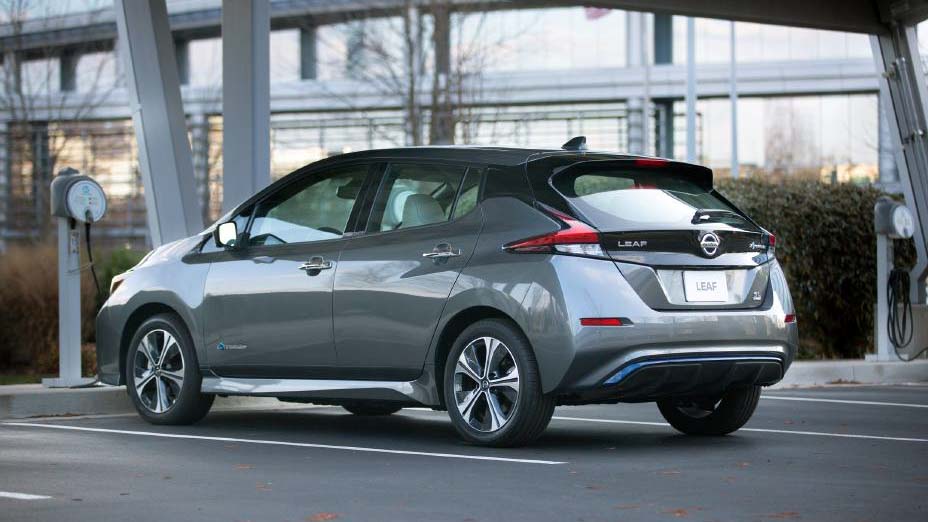
Either way, the Nissan Leaf has two charge ports. One is the faster CHAdeMO charge port which can charge at speeds between 50kW and 100 kW — depending on what model you get. This can give drivers an 80% charge around 40 minutes. The Leaf also has a Type 1 AC charge port which can plug into any old electrical socket (with an adapter) or a fast home charger.
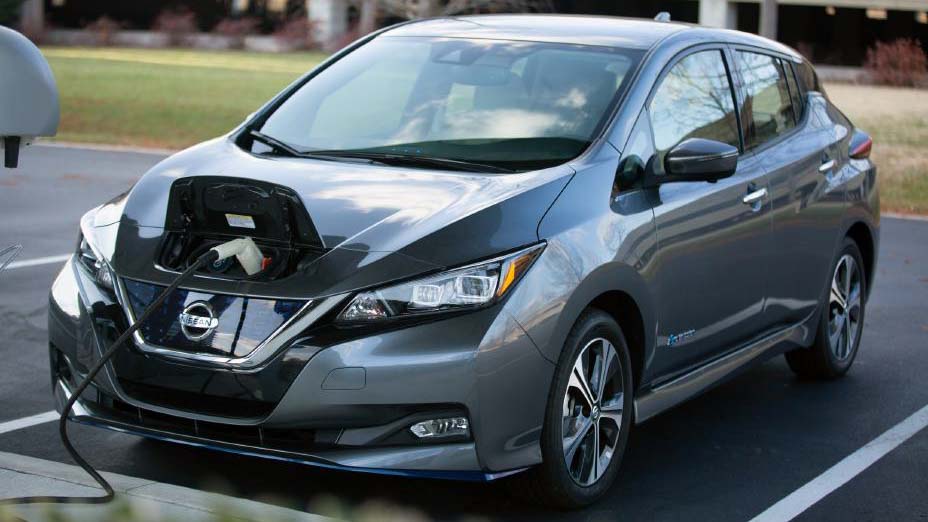
Using a standard 120 volt electrical socket means it can take over two days to fully charge the Leaf. But most likely, home owners will opt to have a dedicated charge point installed in their garage, giving a full charge in around 11.5 hours.
Unfortunately, the Leaf sticks with the CHAdeMO charging port, and while popular in Asia this plug has been supplanted by the CCS charging standard in EU and the U.S. To the point where even the upcoming Nissan Ariya has ditched CHAdeMO for the faster, and more widely-used CCS.
Nissan Leaf review: Interior and cargo space
Some car reviewers like to wax about plushness of leather or the light fuzz of an Alcantara steering wheel. Unfortunately, flowery language will not be necessary for the interior of the Nissan Leaf.
If there’s one word to sum up the interior of the Nissan Leaf, it would be “fine.” The interior itself doesn’t stand out as being overly futuristic or having sweeping lines that decrescendo into front he dash to the doors. The styling is very typical for the Leaf’s price point, and is very Nissan.
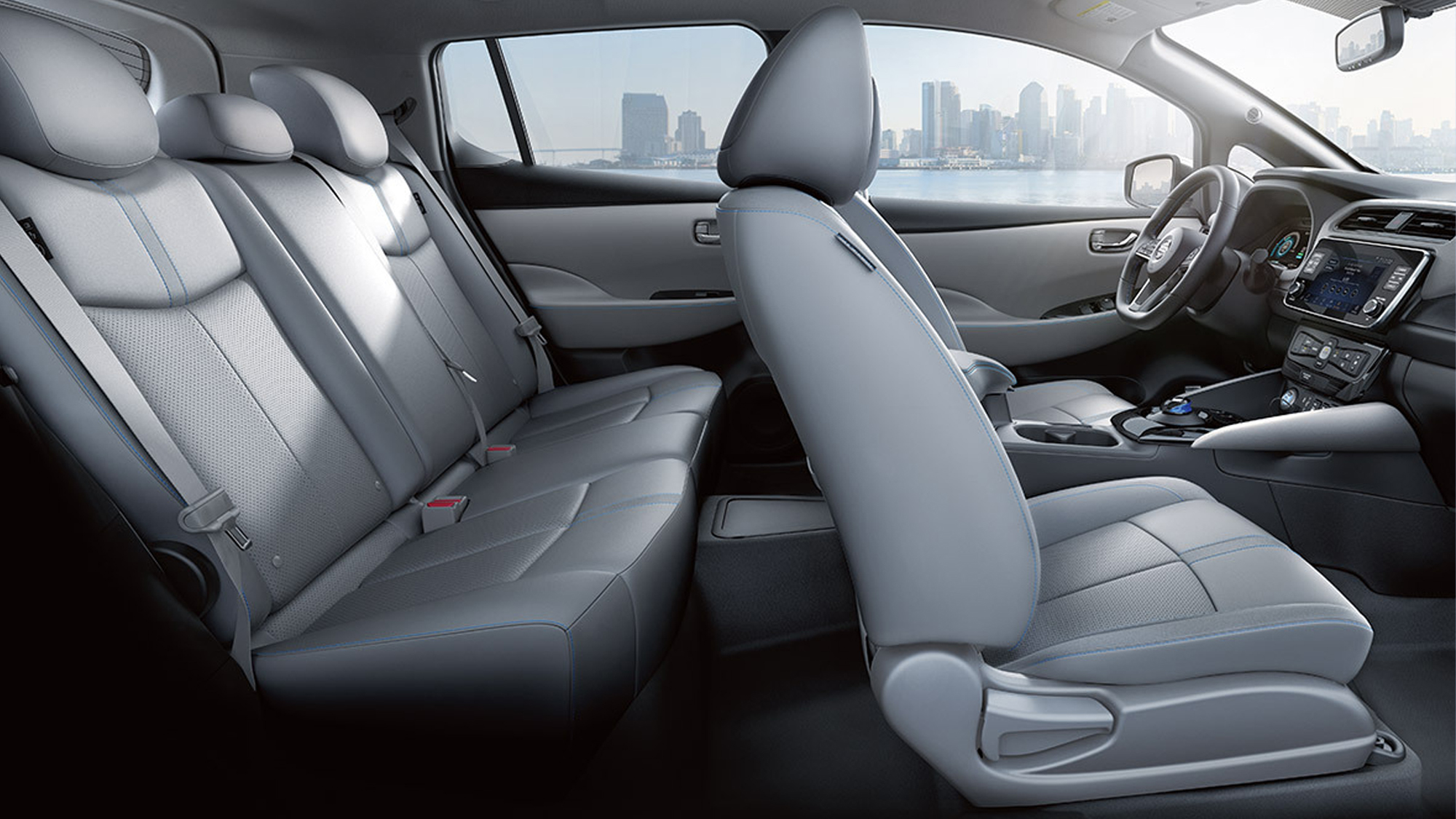
What that means is that things are laid out cleanly. There’s a touchscreen in the center with a few buttons and knobs to the side. While traditional automakers are trying to copy Tesla’s all-screen approach, I find this trend a little annoying and think it’s good Nissan bucked it.
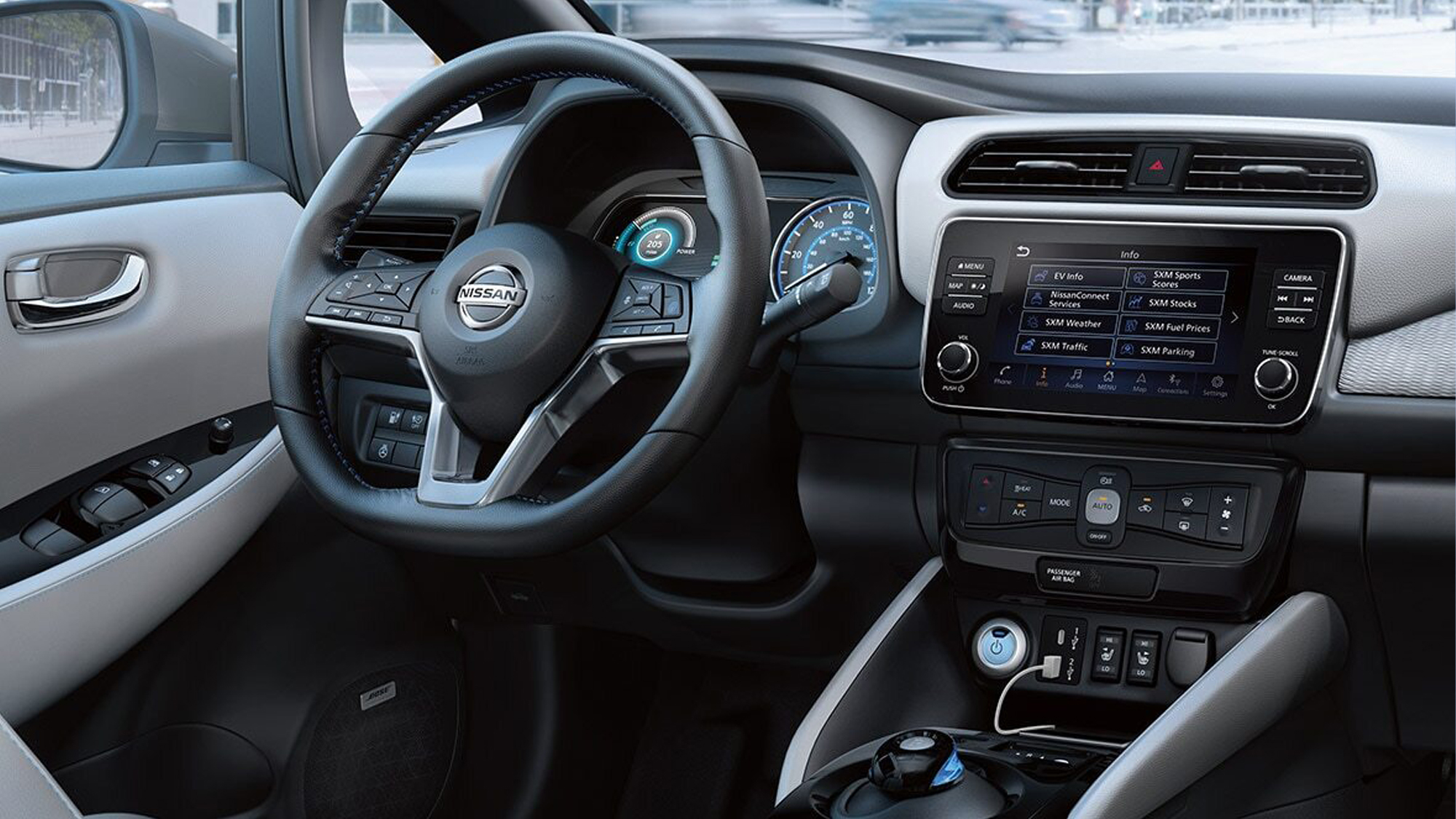
Fiddling with a touchscreen while screaming down the highway at 75mph is not safe. Tactile buttons that can be pressed with muscle memory are far safer for the average driver.
However it would have been nice to have a higher resolution screen on par with a modern tablet. I couldn’t help but notice the pixelation around the Spotify icon when plugging in my phone. The screen was also laggy at times, and seems to be running at a lower frame rate.
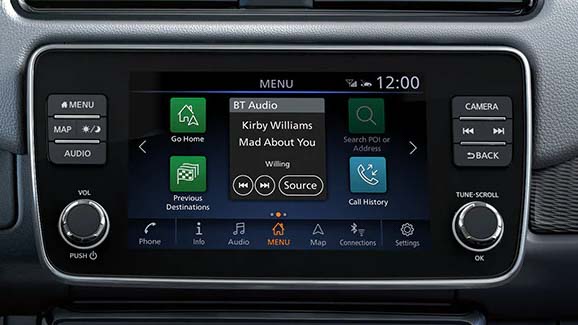
Regardless, underneath the display are what look like spread wings with more buttons for various other climate related functions.
Underneath the instrument cluster is the Leaf’s defining trinket, it’s swooping blue and silver shift lever. The blue shift lever has been with the Leaf since its first-generation design. In function, drivers can slide it up to reverse or down to park.
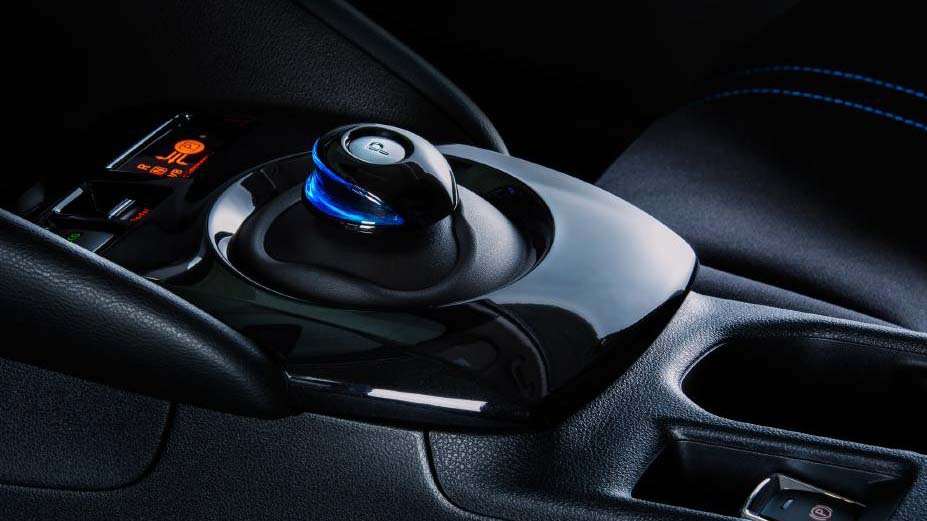
It’s odd at first coming from a traditional lever, but it’s easy to learn and far more elegant. The swooping wave-like blue pattern looks striking, and is usually the first thing people notice when entering the Leaf. While yes, it’s nothing more than a polished piece of plastic, it does show how adding little design cues can make a car feel more special for drivers.
On our Leaf review unit, seats were decently comfortable, though far from the sinking soft seats you might find in a luxury German sedan. The seats and steering wheel can also be heated with the touch of a button, although cooled seats would have been a nice addition on sticky Houston September days.
Going towards the back, there’s a decent amount of rear passenger space. And those of moderate height can sit pretty comfortably. The rear center console does have air conditioning vents, as well as USB charging ports.
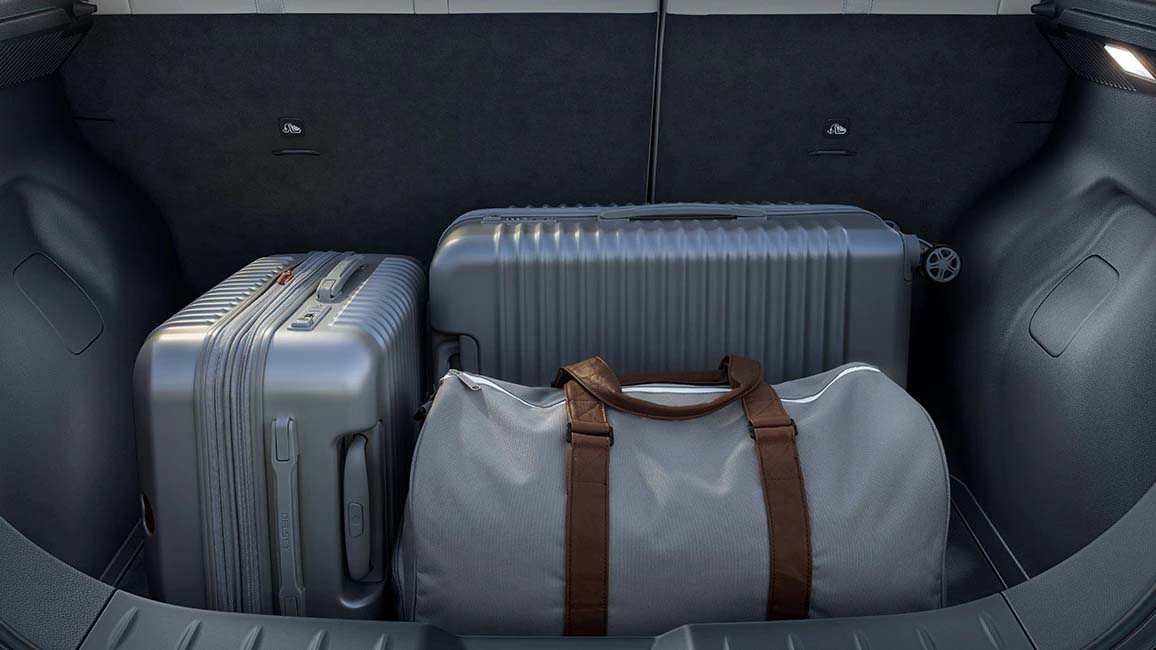
The cargo space in the Nissan Leaf is unexpectedly squat. While the car might look big from photos, it’s actually a relatively small car compared to something like a Toyota Camry. It can handle a solid grocery run, but a heavy trip to a warehouse store like Costco or Sam’s Club might be tough. Luckily, the seats do fold down giving 23.6x30 cubic feet of trunk space.
Nissan Leaf review: Tech and safety features
The Nissan Leaf isn’t adorned in cutting edge high tech like the Mustang Mach-E or the Tesla Model 3. Starting at the top, the most impressive feature is the ProPilot Assist, a lane assist feature that keeps the Leaf in between highway lanes and behind the car ahead.
In our experience, this hands-on driving assist feature worked okay, but required more focus than we would prefer. If the highway is straight, then the Leaf can manage well. But if the Leaf approaches a winding corner, it can start to weave in an attempt to stay centered.
And if coming on to an on-ramp or a part of the highway that connects to another, I couldn’t help but find myself gripping the wheel and readying the brake pedal to slow down so that I could ease into the winding corner.
The feature also required hands to be touching it every 30 seconds or so, which is meant to keep the driver's focus on the road. Luckily, I could rest my hands towards the bottom of the steering wheel instead of being at nine and three at all times.
Apart from that, what I did like was what Nissan calls the Around View Monitor. This feature uses cameras around the vehicle to give a birds eye view of when parking. That can be a tremendous help in preventing a dented fender, or from clipping any passersby. The fact that it’s now a standard feature is a huge plus and Nissan should be commended for its inclusion.
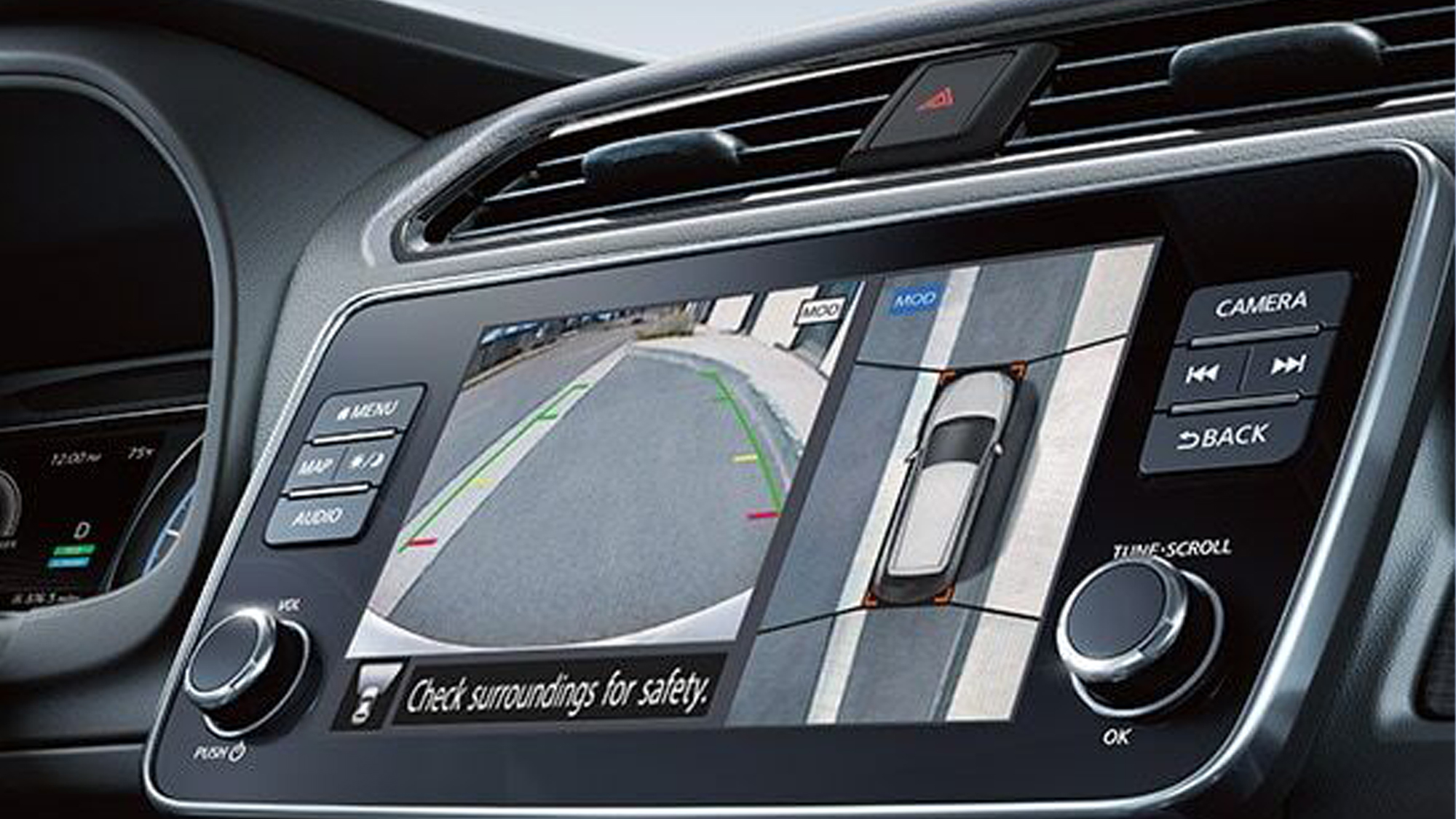
The Leaf does include both Apple CarPlay and Android Auto, but unfortunately there’s no wireless charging.
As for safety, the National Highway Traffic Safety Administration gave the Leaf a five star safety rating, with frontal crash receiving four stars and side crash receiving five.
While I personally didn’t get into a crash in the Nissan Leaf, I did feel safe in the vehicle. And the Leaf, while small, does have a stout stature, making it look larger than it actually is. The added headroom also helps those in obnoxiously large pickup trucks see the Leaf better, which is helpful.
Nissan Leaf review: Driving at an instant
As someone who’s grown up driving internal combustion engines, this is the first time I’ve spent a significant amount of time with an all-electric car. And honestly, my experience was very positive.
The one thing I want to impress upon readers, especially those considering their first EV, using the Leaf is actually very smartphone-like. There’s no ignition sound or the rumbling of an engine. Getting in the Leaf and turning it on is as seamless as pushing the power button.
It means that there’s no need to wait for the engine to warm up. The turning of rotors or 0blasting of pistons means there’s absolutely no vibration. Pulling out of the driveway is weirdly smooth. And honestly, I’d rather commute in an EV over a traditional vehicle just for these tiny comforts.
As for the drive itself, the Nissan Leaf is not the most luxurious. The suspension picks up bumps, while the low rolling resistance Michelin Energy tires also squeal easily. The Leaf picks up a lot of road noise and there’s little in the way of sound deadening material. So you end up hearing a lot of what’s going on outside, especially when it's windy. But these are all compromises that need to be made as EV technology is about maximizing range above all else.
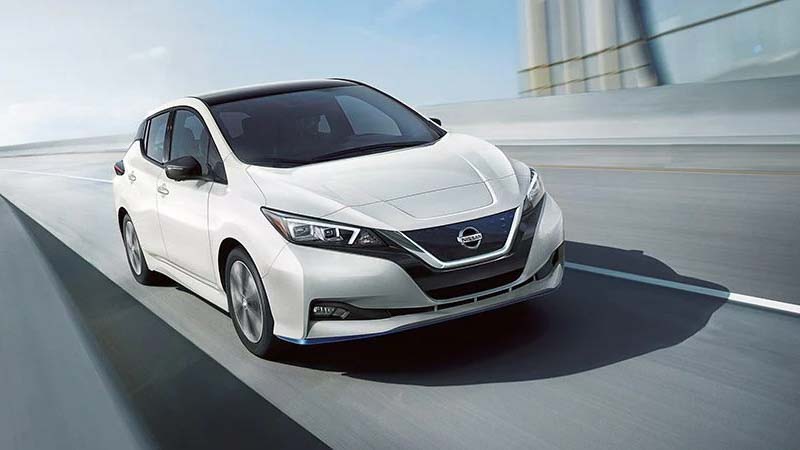
For me, I grew used to some of these mild annoyances. Often, I would have a podcast playing, so much of the drone of the road was tuned out. As for the ride, for those who drive sub-$30K vehicles, it might be on the lower-end of ride quality, but is by no means as rough as driving a go-kart. While not as smooth as a Toyota Camry, it is closer to a Honda Civic or Mazda 3.
The Nissan Leaf has a few driving modes. Most drivers will keep it at Eco for the greatest range. In this mode, the regenerative braking is more aggressive and the car limits acceleration.
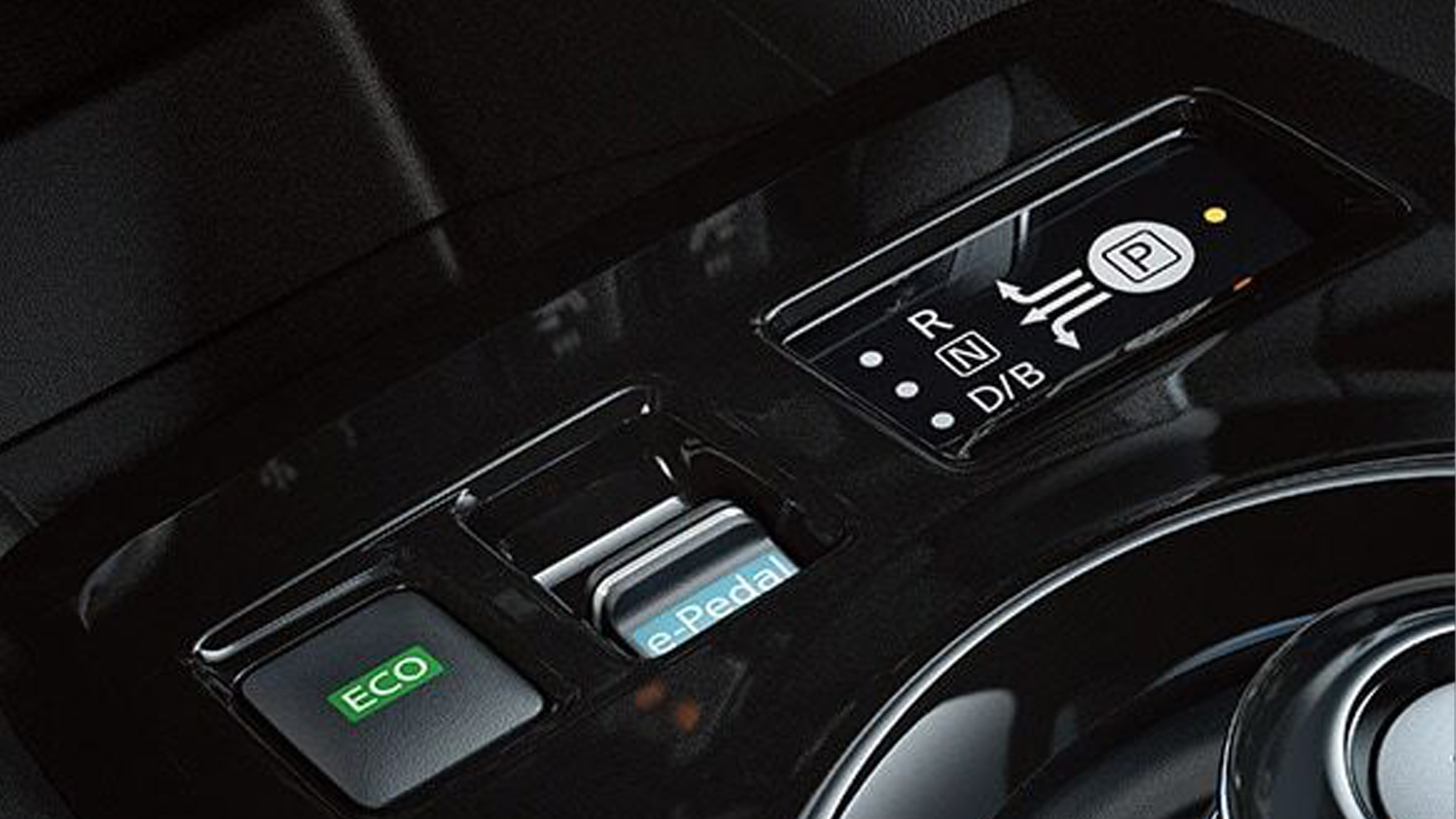
The standard drive mode unleashes the instant acceleration of the electric motor, allowing for peppier runs from stop signs. Honestly, if I weren’t so worried about the Leaf’s range, I would have kept it on the standard drive mode during most of my testing. It’s a good bit of fun, and is a neat party trick to surprise passengers with. Although, it’s nowhere near the ludicrous speeds that Tesla drivers get to play with.
There’s also a brake driving mode, which puts more onus on the regenerative braking, as well as an e-pedal mode. This latter lets drivers use one pedal for both accelerating and braking. Pressing the accelerator will increase speed, whereas letting go will apply braking power. I personally found this mode nauseating, as the braking was too intense for neighborhood driving, and I was worried about hitting the car in front.
The actual steering feel was a bit muted, but that’s to be expected of a commuter-focused EV.
Nissan Leaf review: Verdict
The Nissan Leaf is a good EV. It’s not the best nor will it make Nissan CEO Makato Uchida the second richest man in the world. But it has a very specific task and it accomplishes it respectfully.
Nissan did not go out to make an earth shattering EV. It instead did the responsible thing and made an everyday EV, a car used for going to soccer practice or commuting to work. Most importantly, it put it at a competitive price, beating Tesla to the sub-$30K and sub-$21K (with incentives) price point. Not only that, it’s priced within striking range of the Toyota Prius.
I think the Leaf is the most important car in Nissan’s lineup. It helped Nissan establish itself in the EV space and is allowing the company to step forward into the upcoming Nissan Ariya, which will take on the Tesla Model Y, the Volkswagen ID.4 and the Mustang Mach-E. If the Leaf hadn’t existed for the last ten years, it’s hard to tell if Nissan would have been able to put together what looks to be a compelling EV crossover.
The Nissan Leaf is not an ideal road tripper, is not the most comfortable commuter, nor will its acceleration peel off eyelids. But the Leaf still does an adequate job given its price point and category. And for the right buyer, the Nissan Leaf is the perfect EV to jump into. At least it is until the launch of the Leaf's replacement, a still-unnamed crossover SUV that Nissan has confirmed will be available from 2025.
Imad is currently Senior Google and Internet Culture reporter for CNET, but until recently was News Editor at Tom's Guide. Hailing from Texas, Imad started his journalism career in 2013 and has amassed bylines with the New York Times, the Washington Post, ESPN, Wired and Men's Health Magazine, among others. Outside of work, you can find him sitting blankly in front of a Word document trying desperately to write the first pages of a new book.
